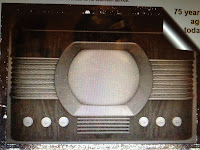Sound is not just mechanical wave transmitted into our ears. It is more than that and it has for us many meanings. In communication, sound and visual go hand in hand, and this does not match only in video, but mainly in our mind. In the more simple philosophical form we can say that sound has "best pictures", which are in our head. As american philosopher Walter Ong in 1971 said: "The world of sound is an event world, while the world of sight is an object".
Each kind of sound has different reaction on us and can represent any object, place or thought with emotional feeling or content. For example simple bird's tweet can for someone presents a memory from a child hood, make a good feeling, remind of some holiday place or just bird's tweet and nothing else. By this, we can say that sound as itself is a form of abstract art. In the ways how we are hearing sound is more than one. Most of them depends on our mood or high of emotional level. Deep listening is when we are focus and listening every singe sound around us - when we are nervous, in fear etc. Any simple everyday life sound can has strong impact on us, if it is connected with some thought or memory. As good example of this can be seen at Vietnam war movie "Apocalypse". Scene where a man in the hotel room lays on a bed, looking at ventilator - its sound reminds him of helicopters on battlefield. This sound effect is also called "foley", which gets its name from Jack Donovan Foley, who was a sound editor at Universal Studio in the 1950s and became famous for his advancements in synchronized sound effects. So we would like to describe sound as vibrations and context ( the medium ) which is most important.
Each sound has three phases: the attack, the sustain and the decay. These make up the sound envelope. Sound always has a number of characteristic marks : it is immersive, so all around us and all the time. It cannot be shut out, it contains depth and has no directionality. Also sound cannot be frozen, there is still some kind of sound around, even in complete silence. Sound can also have physical way - for example vibrations through our body in disco clubs. In the perspective way, there are three main points: figure, ground and field. Figure is most important, ground is the listeners social world and field is the physical world around the listener. So if we want to use example the class room with students and lecturer, then he would be a figure, students would be the ground and field would be an objects around us. All sound interaction has forms of distances : intimate, personal, informal, formal and public - "government way" speeches.
Sound is also a concept of semiotics. In the best way, we can see it by musical artist John Cage and his live performance "4,33" what is the 4 minutes and 33 seconds of completed silence. By this way, he is creating of sense that silence is music as well! Audience do not know that there is not going to be any music at all. Art should be profokation, and Cage is perfectly provoking people in this way. The admission ticket for his concert is about £400. "All sound is music, music is all sound!" The most important on how do we see sound and how we understand it is idea of presenting of sound. We do not however hear sound in this technical way, we hear sound in exactly the same way that we see images - as semiotic indicators. Also sound means different things for different community. Even when creating video, most important is what kind of sound we have to use to get our way of meaning from images to the audience. The next creative thing, which should video, especially film contains is meaning. Everything is about meaning which belongs to audience. The story of film should not be obvious and audience have to figure it out. Even if it has to be successful it has to be "aesthetic" (beautiful). By watching it, we need to have enjoyable visual experiences in every way and should have emotional impact. Sometimes, great film or movie does not need million budget, many special effects of best movie star actors. Most of time it is about idea, about the meaning and emotional feeling to the audience. Also each video piece has different emotional impact on each person. For me personally, the most strong emotions create this video about Chernobyl nuclear disaster. The short music video is created from original shots from the days of disaster and even from nowadays camera records from the the Prypiat - now and forever called as Ghost Town. This video and whole accident is close to me because in that time, east side of my birth country - Slovakia, was hit by radiation as well.


